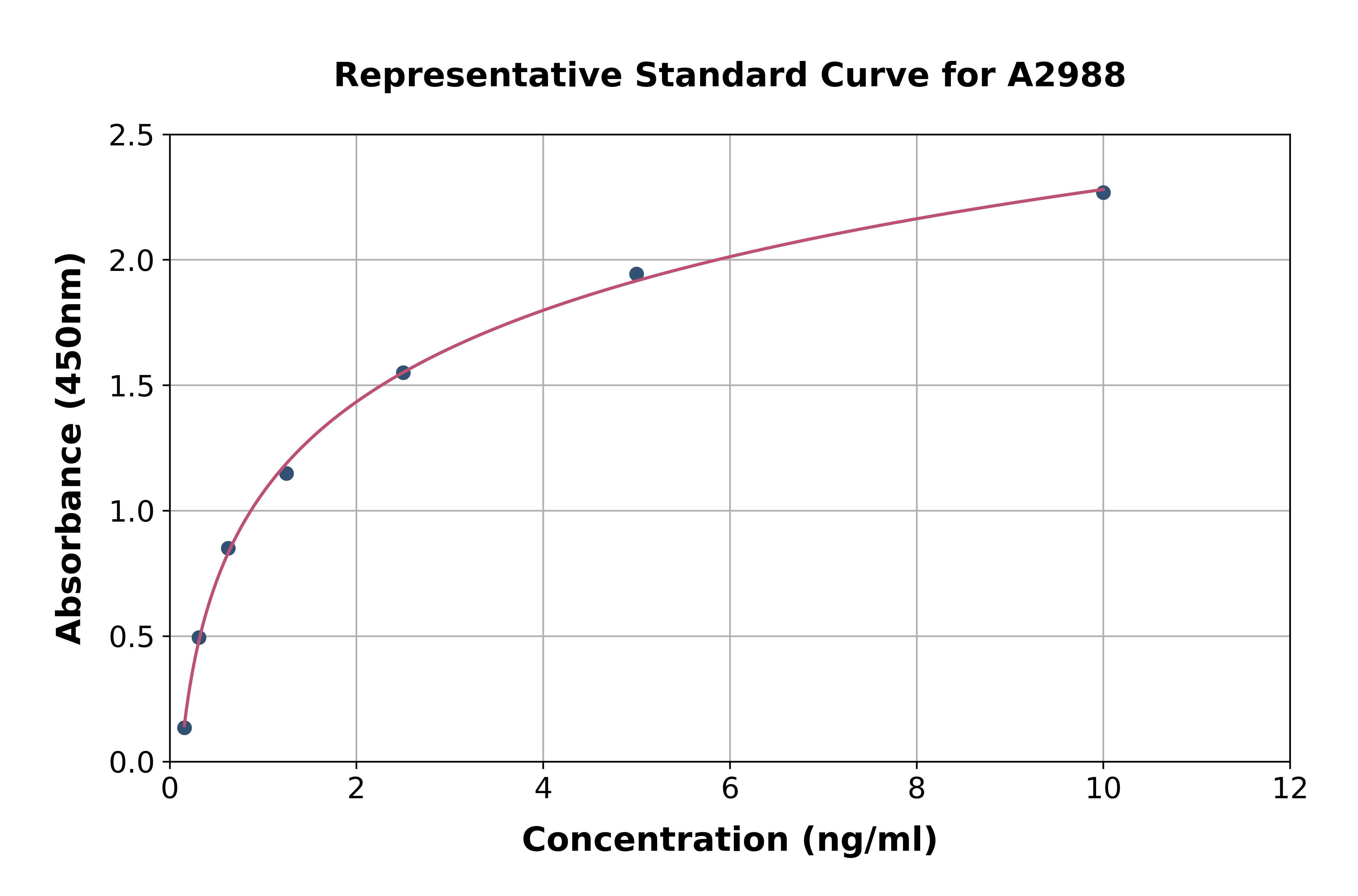Human Leptin ELISA Kit
ARG80831
Product group Assays
Overview
- SupplierArigo Biolaboratories
- Product NameHuman Leptin ELISA Kit
- Delivery Days Customer23
- ApplicationsELISA
- Assay Sensitivity0.25 ng/ml
- Assay Time1 h, 30 min (RT/shaker), 15 min (RT/dark)
- CertificationResearch Use Only
- Scientific DescriptionLeptin, the product of the ob gene, is a recently discovered single-chain proteohormone with a molecular weight of 16 kD, which is thought to play a key role in the regulation of body weight. Its amino acid sequence exhibits no major homologies with other proteins. Leptin is almost exclusively produced by differentiated adipocytes. It acts on the central nervous system, in particular the hypothalamus, thereby suppressing food intake and stimulating energy expenditure. Leptin receptors - alternatively spliced forms exist that differ in length - belong to the cytokine class I receptor family. They are found ubiquitously in the body indicating a general role of leptin, which is currently not fully understood. A circulating form of the leptin receptor exists which acts as one of several leptin binding proteins. Besides its metabolic effects, leptin was shown to have a strong influence on a number of endocrine axes. In male mice, it blunted the starvation-induced marked decline of LH, testosterone, thyroxine and the increase of ACTH and corticosterone. In female mice, leptin prevented the starvation-induced delay in ovulation. Ob/ob mice, which are leptin deficient due to an ob gene mutation, are infertile. This defect could be corrected by administration of leptin, but not through weight loss due to fasting, suggesting that leptin is pivotal for reproductive functions. All these actions may, at least in part, be explained by the suppressive effect of leptin on neuropeptide Y (NPY) expression and secretion by neurons in the arcuate nucleus. NPY is a strong stimulator of appetite and is known to be involved in the regulation of various pituitary hormones, e.g. suppression of GH through stimulation of somatostatin, suppression of gonadotropins or stimulation of the pituitary-adrenal axis. The most important variable that determines circulating leptin levels is body fat mass. Obviously, under conditions of regular eating cycles, leptin reflects the proportion of adipose tissue showing an exponential relationship. This constitutive synthesis of leptin is modulated by a number of non-hormonal and hormonal variables. Stimulators in both rodents and humans are overfeeding, insulin and glucocorticoids. Suppression has been shown for fasting, cAMP and beta-3-adrenoceptor agonists. From these findings it becomes clear that leptin is an integral component of various metabolic and endocrine feedback loops. For clinical purposes, it is important to note that serum leptin levels show a moderate circadian variation with a peak during the night at about 2 a.m. The leptin values at this time are about 30 to 100 % higher than the levels measured in the morning or early afternoon. This variation together with the influence of food intake needs to be taken into account, when blood samples are collected. Under fairly standardized conditions, i.e. normal eating cycles and blood sampling in the morning or early afternoon, a single leptin measurement is informative. For the appropriate interpretation of measured leptin levels, reference ranges are required. Because body fat mass is the major confounding variable, these ranges should be referred to measures of the percentage body fat such as body mass index (BMI) or percent body fat determined by, e.g., bioelectric impedance assessment (BIA). Leptin levels are higher in females than in males and an age dependence was shown in children and adolescents. Therefore, reference ranges referring to measures of body fat should be stratified according to gender and pubertal development. Leptin levels are high in most obese patients suggesting the presence of leptin insensitivity. In a small percentage of patients, however, leptin levels have been found inappropriately low with respect to their fat mass. It remains for future studies to prove that these patients represent a new pathophysiologic entity: leptin deficiency. Since leptin has also been shown to be of great importance for reproductive functions, possible new pathophysiologic mechanisms may be discovered relating infertility to insufficient leptin production. The discovery of leptin has released an avalanche of research activities seeking to understand the regulation and actions of this new hormone. Most importantly, it has provided a key to better understand the physiology of body weight regulation and to unveil possible pathophysiologic mechanisms in both obesity and eating disorders. Further, it may provide new insights into certain causes of infertility.
- Storage Instruction2°C to 8°C
- UNSPSC41116133






